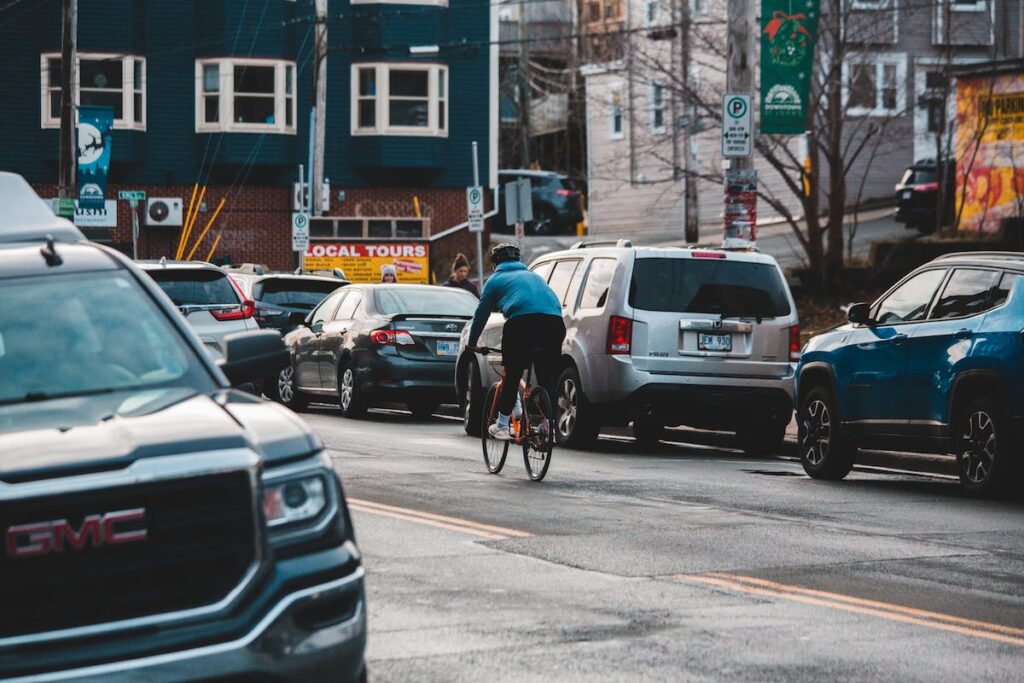Which side of the road bicycles should be driven on depends on the specific traffic laws and regulations of the country or region you are in. Many countries, including the United States, Canada, and the majority of the European Union, require bicycles to be driven on the right side of the road in the same direction as motor vehicle traffic. The term “riding along with the traffic” is used to describe this.
Cycling on the right side of the road enables bicycles to adhere to the same traffic regulations and restrictions as other vehicles. Additionally, it lessens confusion and raises the standard of driving safety.
It’s essential to remember that there can be exceptions or modifications in particular circumstances or geographic locations. To make sure you are riding on the correct side of the road and according to any particular rules or guidelines for cyclists, it is always advisable to educate yourself with the local traffic laws and regulations in the area where you will be riding.
1. Countries with left-hand traffic:

Bicycles are typically expected to be driven on the left side of the road, in the opposite direction from the flow of motor vehicle traffic, in nations like the United Kingdom, Australia, and Japan. For cyclists accustomed to riding on the right side of the road, this may take some getting used to, but it’s a crucial safety consideration in these nations. Cycling on the left side of the road increases cyclists’ visibility to drivers and improves their ability to anticipate and respond to changing traffic situations. It’s also crucial to keep in mind that traffic laws and regulations in different nations may vary, so it’s a good idea to become familiar with local laws before cycling in new territory. You can keep yourself and others safe when cycling by being well-informed and abiding by local laws.
2. Local regulations and exceptions:

Despite the fact that it’s normally safer to ride in the direction of the flow of traffic, there are some circumstances where doing so may be permitted or even necessary. For instance, some bike lanes are intended to be used in opposition to the flow of traffic, while others are bidirectional. On some highways or in particular places, such as residential streets or low-traffic zones, municipal rules may permit cyclists to ride against the flow of traffic. It’s crucial to remember that riding against traffic can be risky since it makes it more difficult for vehicles to detect you and respond in time. To keep safe while cycling, it’s always a good idea to verify local laws and observe traffic laws.
3. Infrastructure and designated cycling facilities:

For cyclists of all ages and abilities, dedicated cycling infrastructure like bike lanes, walkways, or shared-use trails can increase safety and accessibility. These facilities frequently offer a specific space for riding while separating bicycles from motor vehicle traffic. It’s crucial to heed any markers or signage that direct you to the proper side of the path or lane when utilizing these facilities. For instance, some bike lanes are physically separated from the road, while others are just painted on the surface of the road. Similar to this, some shared-use routes might feature distinct lanes for bikes and pedestrians, while others might demand that cyclists give way to pedestrians. By adhering to these guidelines and being mindful of your surroundings,can ensure your safety while cycling and the safety of others.
4. Visibility and safety:

Since cyclists can be more visible to drivers when riding with the flow of traffic, it is often safer to do so than when riding against it. This lowers the risk of unanticipated confrontations or collisions. When cycling in traffic, cyclists can anticipate and respond to changing road conditions, such as stop signs, traffic signals, or turning vehicles, by using the same visual cues as drivers. By doing so, the possibility of accidents can be decreased, making riding a safer and more reliable means of transportation. On the other side, cycling against the flow of traffic might raise the danger of collisions since drivers might not be aware of or observe cyclists coming from the opposite direction. Unexpected conflicts and collisions may result from this, particularly at crossroads or other places where traffic patterns alter.
FAQs:
How does a cyclist signal right?
While cycling, you can form a “L” with your left arm by extending it out to the side, bending it upward at the elbow, and signaling a right turn. By clearly stating your intentions, you can lessen the danger of an accident and help others on the road know that you’re planning to turn right.
Why do cyclists raise their hands?
While riding, cyclists may raise their hands for a variety of reasons, but one frequent one is to signal to other drivers. A cyclist might raise their hand, for instance, to indicate that they are turning, slowing down, or stopping, or to warn other drivers of a hazard in the road.
Are cyclists allowed in the middle of the road?
If there is no authorized cycling infrastructure, cyclists may occasionally be permitted to ride in the center of the road. However, local traffic laws and regulations may have an impact on this, so it’s crucial to become familiar with them.
Conclusion:
irrespective of which side of the road you are on, safety should always come first when cycling. A safer and more enjoyable riding experience can be achieved by following local traffic regulations, being dependable and visible, and using designated bicycle infrastructure whenever it is practical. For instance, wearing bright or reflective clothing can help you stand out to drivers, and utilizing hand gestures to signal turns or stops can assist other drivers understand your intentions.

